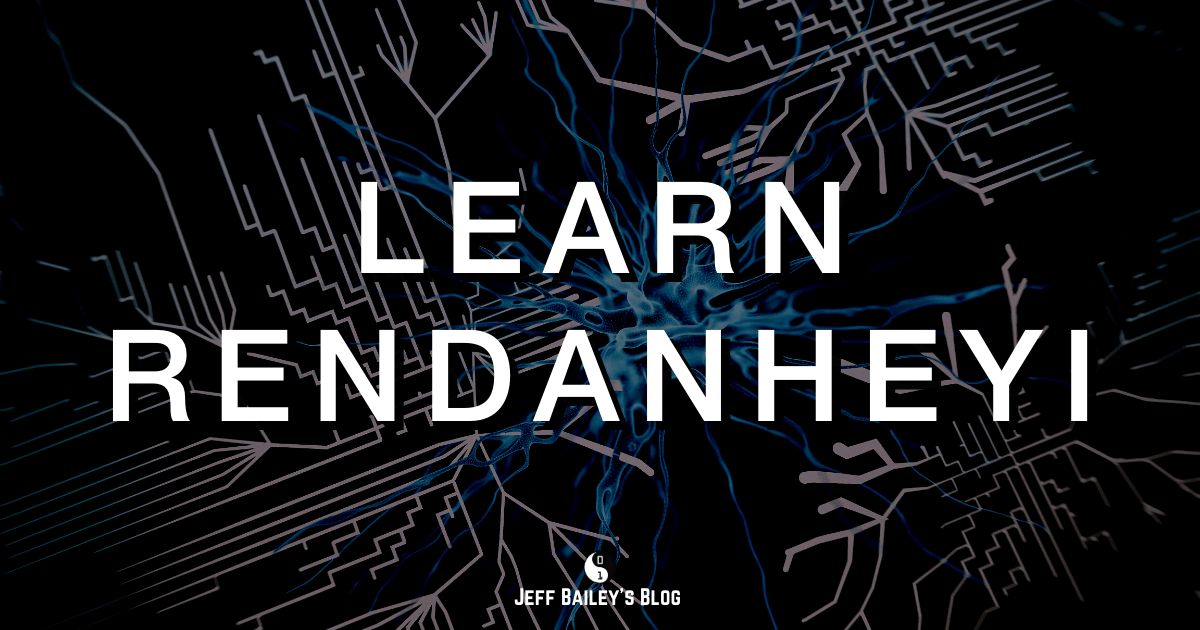What Will You Learn?
- What is Rendanheyi?
- What are the use cases for Rendanheyi?
- What are the key aspects of Rendanheyi?
- Where can I learn more about Rendanheyi?
The Basics
Rendanheyi is a Haier management model that has slowly developed since 2005 and meets the needs of a world steeped in change. Due to their success, Europeans and Americans learned about this management model through acquisitions initiated by Haier. Rendanheyi has no direct English translation, but loosely, it means integrating people and goals.
So why is a technical blogger talking about a business management model?
I’m a big fan of decentralization, so a business model that embraces it is an exciting topic. Haier’s business model resembles a distributed system, reflecting the Internet designed to work in isolation without central governance. And not to get into politics, it embraces the decentralized model of the U.S. government.
In the following paragraphs, I’ll attempt to make sense of the Haier model.
Primary Use Cases
- Eliminating bureaucracy in large organizations
- Paving a path to better employee and customer experiences
- More effectively meeting the needs of real people
Less Suitable Use Cases
- Small businesses can use microenterprise philosophies, but a microenterprise isn’t necessary in a small organization.
Level Set
I’m not fond of corporate buzzwords, but I want to clarify my goals. I intend to compare and contrast technology, corporate enterprise culture, and government systems. I’ll compare concepts like microservices, micro frontends, and distributed systems.
Inversion of Control
A principle called Inversion of Control is highly esteemed in software development.
So, what’s the point of IoC?
- To decouple the execution of a task from implementation.
- To focus a module on the task it is designed for.
- To free modules from assumptions about how other systems do what they do and instead rely on contracts.
- To prevent side effects when replacing a module.
Now, for a comparison.
Traditional central planning calls the micro-enterprise, and the micro-enterprise does all the work. A micro-enterprise within a corporation like Haier follows the IoC principle. It controls its strategy from within rather than having central planners dictate its behavior. Haier focuses on employees and their connection to people by allowing autonomy within its enterprise. It facilitates a single-responsibility model that reduces complexity and increases agility.
Single Responsibility
As a micro-enterprise focuses on a specific market, it becomes easier to build brand excitement. The goal of becoming a brand people talk about is made possible when smaller groups have limited their scope of responsibility.
A reduced cognitive load is an added benefit of focusing on a limited set of responsibilities. I work in a corporation, and consuming an enormous cognitive load is required to succeed.
Hacking The System
A key takeaway is that Rendanheyi helps large companies eliminate bureaucracy. In complex corporate environments, getting things done often requires hundreds of meetings and planning. Using micro-enterprises that Rendanheyi prescribes to corporations reduces tight coupling between humans who aren’t interested in your business objectives.
I’ve never experienced Rendanheyi, but it sure feels like heaven. I would love to have an opportunity to extract large organizations into single or at least limited-responsibility enterprises. The weight of a large organization can be crushing for those faint of heart.
Microenterprises
There are loosely two primary categories.
Customer Facing
Customer-facing microenterprises are in direct contact with customers. They focus on servicing a customer post-purchase with repairs, support, local stores, Etc.
Supporting
Supporting microenterprises fulfill the needs of customer-facing enterprises by selling their services to customer-facing enterprises.
Notably, Haier consists of 4,000 microenterprises.
Strategy
Microenterprises have control over their business strategy. In a traditional top-down corporate structure, business strategy dictates the experience of tens or even hundreds of thousands of employees. A one-size-fits-all approach can be powerful, but it’s seldom practical. Each business unit has different target consumers, and with product & service customization becoming commonplace, consumers don’t want or care about a corporation’s internal product strategy. Most people only care about the level of service, the quality of the product, and how easily they can obtain it.
Micro-communities
Micro-communities of microenterprises network to service customers of a corporation. If a microenterprise isn’t delivering value to the market, it dissolves, and the company moves on.
Conclusion
I work in a large company and feel the pain a top-down organization produces. Hiring needs improvement, strategies are constrained, and innovation is snuffed out or outsourced through expensive acquisitions.
When I stumbled upon Rendanheyi, I was immediately impressed. Given my technical background, which includes working to decouple code and managing distributed systems, I immediately saw the benefit of the Rendanheyi model.
Here’s hoping executives see the value in this model and the enormous downsides of a monolithic organization. Top-down models have their place, but betting it all on a monolith will result in wasted money, high employee attrition, and stunted outcomes.
Learn Rendanheyi - Beyond the Basics
Related Content
- How Haier Works - Video Animation
- Applying the Lessons of Haier’s Rendanheyi beyond China
- ‘Rendanheyi’: what can the managers of tomorrow learn from Chinese approaches to management?
- Zhang Ruimin - Creator of the Rendanheyi model
- Haier purpose - Learn about Zhang Ruimin and how Haier works
- Rendanheyi news
Other Learning
- How Do I Learn Effectively?
- Learn 3D Graphics
- Learn Amazon Athena
- Learn Asymptotic Notations
- Learn AWS Amplify
- Learn Color Theory
- Learn Data Visualization
- Learn Design Systems
- Learn ECS
- Learn GitHub
- Learn How To Prioritize
- Learn Java
- Learn Java Coding Challenges
- Learn JavaScript
- Learn jq
- Learn Kubernetes
- Learn Python
- Learn Rendanheyi
- Learn SignalFx
- Learn Software Architecture
- Learn Software Design Patterns
- Learn Structurizr
- Learn systemd
- Learn Terraform
